Conjunctivitis in Cats: Causes and Treatment

By Evelyn Harcourt
juin 03, 2025 - 1 min read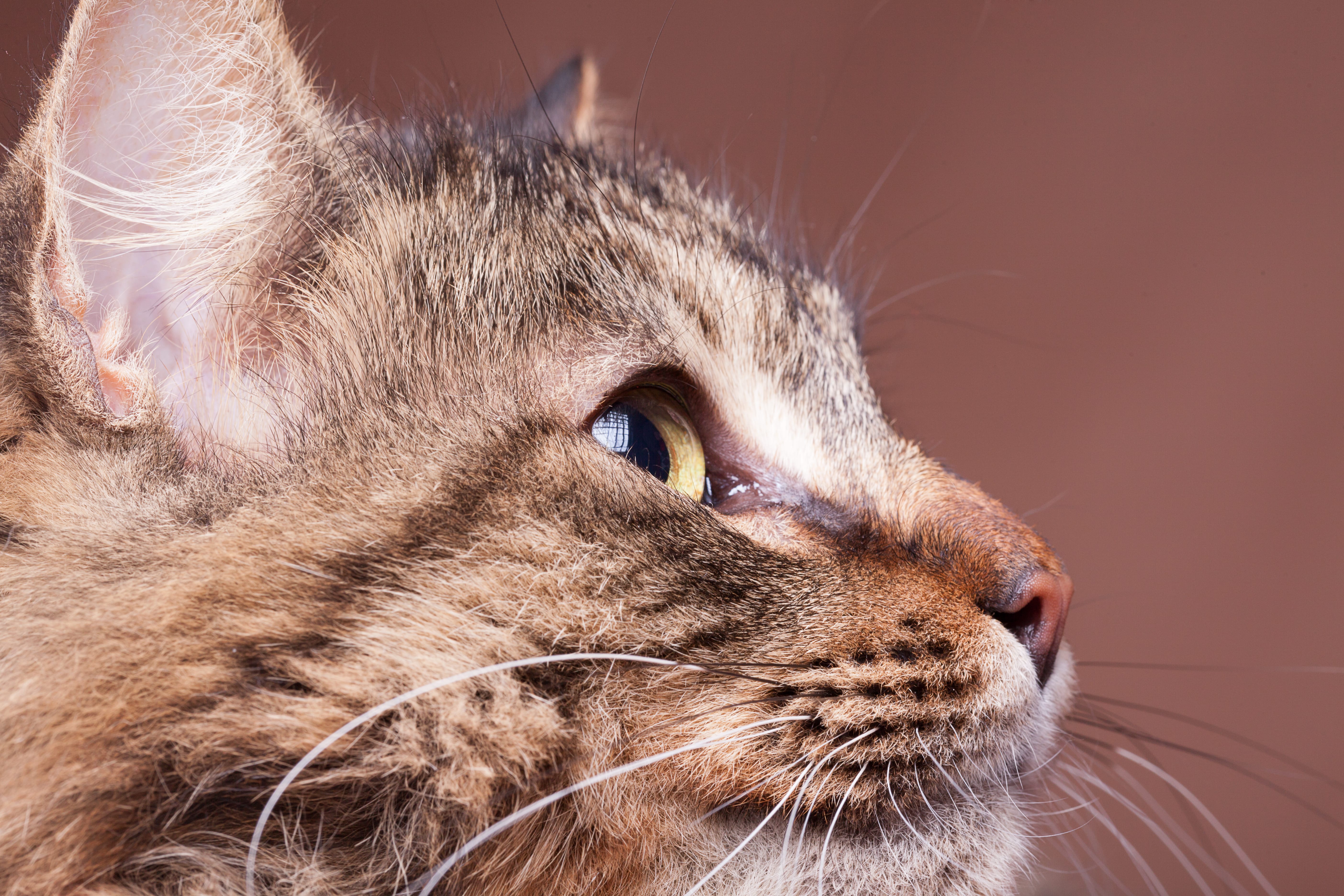
Conjunctivitis is a condition that affects cats of any age and will sometimes recur throughout their life. You may see it described as ‘pink eye’ depending on where you read about it. While unpleasant, most cats cope well, and the prognosis is excellent.
Conjunctivitis is the most common eye disorder in cats and can have a wide range of causes. This article looks into how to recognise the signs, potential causes, diagnostic tests that may be performed, and treatment and management options.
What is Conjunctivitis in Cats?
The layer of tissue that covers the eyes and eyelids is called the conjunctiva. When it becomes inflamed, we call this conjunctivitis.
Understanding the Role of the Conjunctiva
The conjunctiva protects the eye from the outside world and provides lubrication so it does not dry out.
It also plays a role in the immune system, with cells scanning for pathogenic intruders and alerting the rest of the body if they are detected.
How Conjunctivitis Affects Cat Eye Health
When there is a bout of conjunctivitis, the conjunctivae become red and swollen, and we typically see excessive watering and tear staining (wet fur). A cat’s vision may be slightly blurred, and they will be in some discomfort.
Common Symptoms of Cat Conjunctivitis
The symptoms we see can be mild and hard to spot or may become very obvious in a short time. Any changes to your cat’s eyes or eyelids should be taken very seriously.
Redness, Discharge, and Swelling
The lining of the eye becomes bright red, and there is visible swelling. Due to this, your cat may blink more and squint. More discharge is produced than normal, leading to a wetness of the fur and a buildup of crust.
There may be a yellow or green discharge, particularly when there is a secondary bacterial infection.
Behavioural Signs Your Cat Is in Discomfort
Your cat will be uncomfortable and this can lead to eye rubbing and scratching, as well as to excessive blinking and squinting. You may also notice that your cat is hiding away, less sociable, lethargic, or grumpy.
Some cats are very good at hiding the signs they are in discomfort, so don’t rule out pain, even if your cat seems to be acting normal.
When Symptoms Worsen
Should the conjunctivitis progress, you may notice additional signs. These can include:
- Holding the eye closed
- A thick, gunky discharge
- A bloodshot eye
- A cloudy cornea (surface of the eye)
- Food refusal
- Reduced vision (cat may bump into things)
- A pinpoint hole in the eye (perforated ulcer)
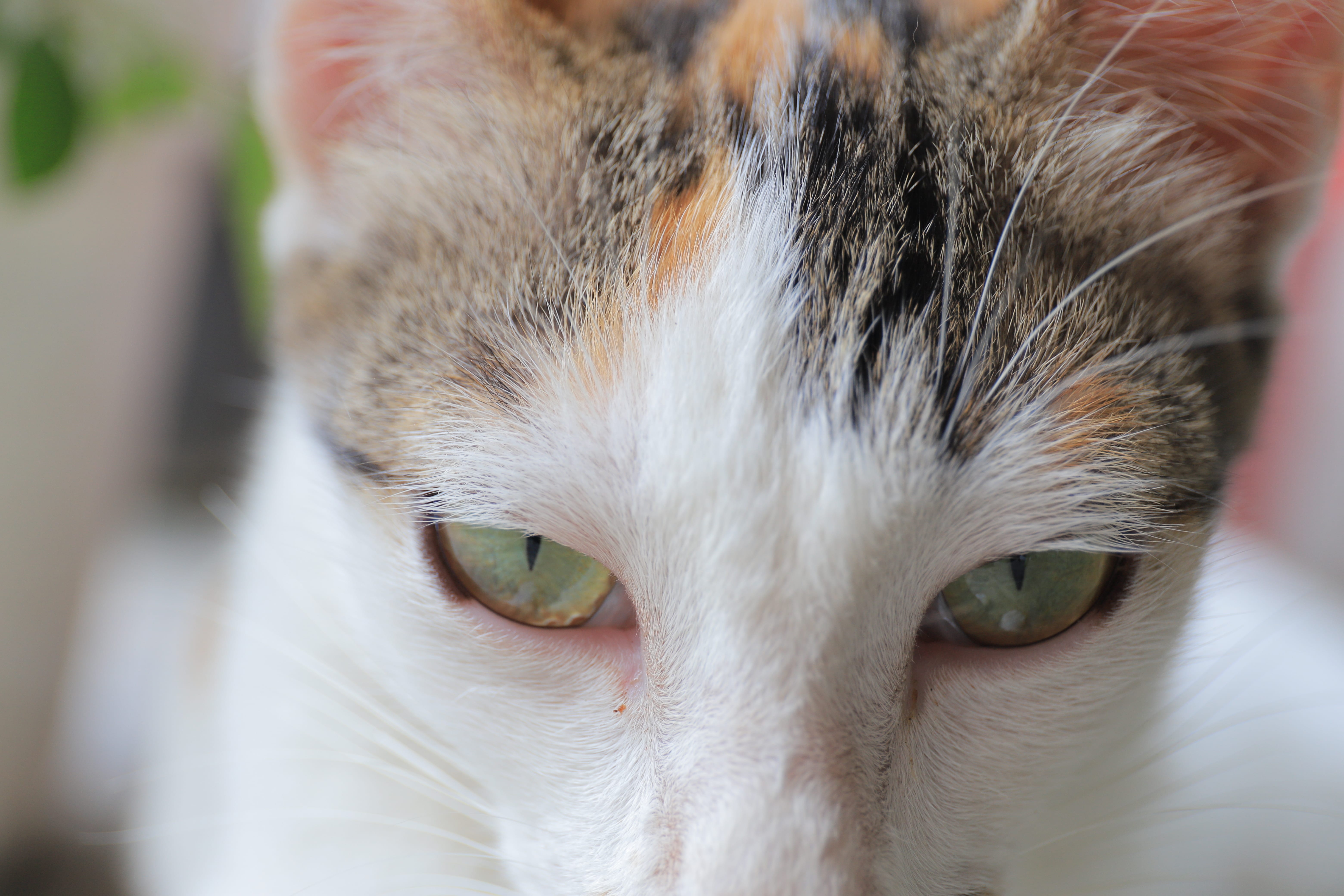
Causes of Conjunctivitis in Cats
Conjunctivitis is a symptom, rather than a condition. It has a wide range of causes, such as:
Viral Infections (e.g. Feline Herpesvirus)
Viruses, including Herpes and Calicivirus are extremely common in cats, particularly in the unvaccinated. Those with viral infections, such as cat fl,u tend to have additional symptoms such as sneezing, coughing, nasal discharge, oral ulcers, and a fever.
Bacterial Infections
Bacteria such as Mycoplasma and Chlamydophila can lead to conjunctivitis and are frequently associated with yellow or green ocular discharge.
Often, the bacterial infection is secondary to another issue, such as a viral infection or allergies. So, where possible, we want to figure out why the bacterial infection has developed.
Allergies or Irritants
Environmental allergies like dust mites and pollen can lead to conjunctivitis. You would expect additional signs like sneezing, too. When the allergy is to something outside (like trees or pollen), the signs are seasonal, rather than occurring all year round.
Irritants such as dust, smoke, air fresheners, cleaning products, and diffusers can also irritate the eyes and cause inflammation. With cats in the home, it is best to try to reduce the chemicals used in the household and keep the air well ventilated.
Owners should also know that certain chemicals (particularly essential oils) can be highly toxic.
Foreign Bodies or Eye Trauma
Brambles, burrs, and grit can all get under the eyelid and cause sudden and severe irritation. Cats who go outdoors are at the highest risk.
For those who have contact with other cats, there is also the potential for a cat scratch to the eye, which frequently leads to inflammation as well as a bacterial infection.
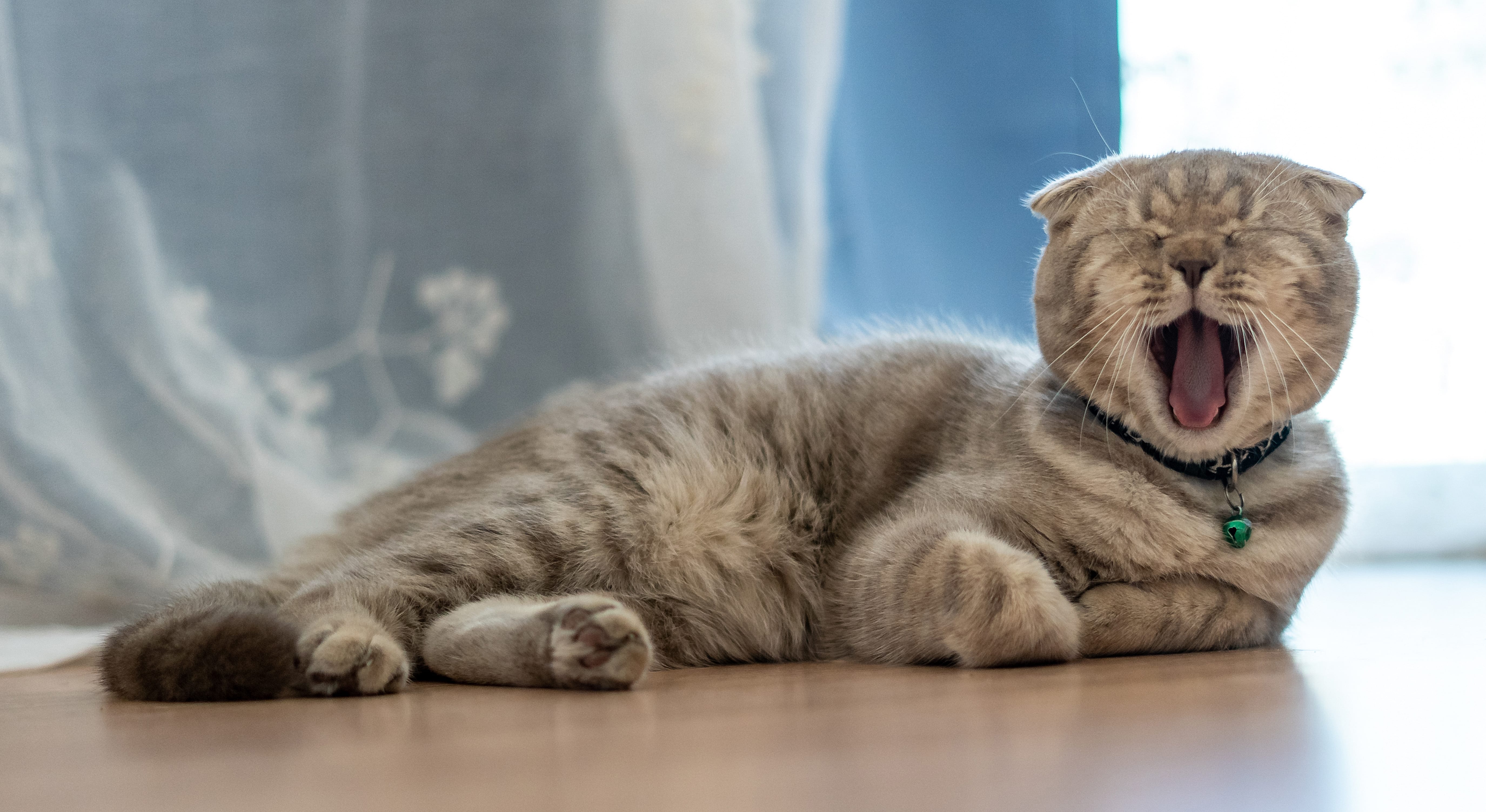
Diagnosing Conjunctivitis in Cats
With any unusual eye symptoms, a vet visit is in order. We want to reduce the risk of any permanent scars or vision loss.
Vet Eye Exams and Diagnostic Tools
Your vet will visibly assess your cat's eyes and should also perform a fluorescein stain to check for any eye ulcers. They may use a saline wash to flush the eye and remove any debris.
Less commonly, they might recommend running some tests, such as a culture (to check for an infection) or cytology (to assess the cells that are present).
Distinguishing From Other Eye Conditions
Conjunctivitis can mimic other eye conditions or occur alongside them. Your vet may wish to check the eye pressure if glaucoma is a concern and will also check the tear production if ‘Dry Eye’ is suspected (though this condition is much more common in dogs).
Treatment Options for Cat Conjunctivitis
The sooner the treatment is started, the better. What is issued will depend on the cause and extent of your cat’s conjunctivitis.
Prescription Eye Drops or Ointments
The mainstay of therapy will typically be antibiotic eye drops or ointment. Oral or injectable antibiotics are not usually given, as they do not reach high enough concentrations in the eyes.
Pain relief and anti-inflammatories may also be required, and these are issued topically, via oral medicine or injection.
Managing Underlying Conditions
Crucially, any underlying conditions must be addressed and managed. For example, if your cat is reacting to something in the environment, we want to minimise its exposure, and it could benefit from some antihistamines.
Home Care and Cleaning Tips
You’ll want to stop any eye rubbing, and you may need to use a Buster collar to achieve this. While wearing one, your cat must stay indoors.
Cotton wool and warm water can be used to gently clean away any discharge, as often as is needed.
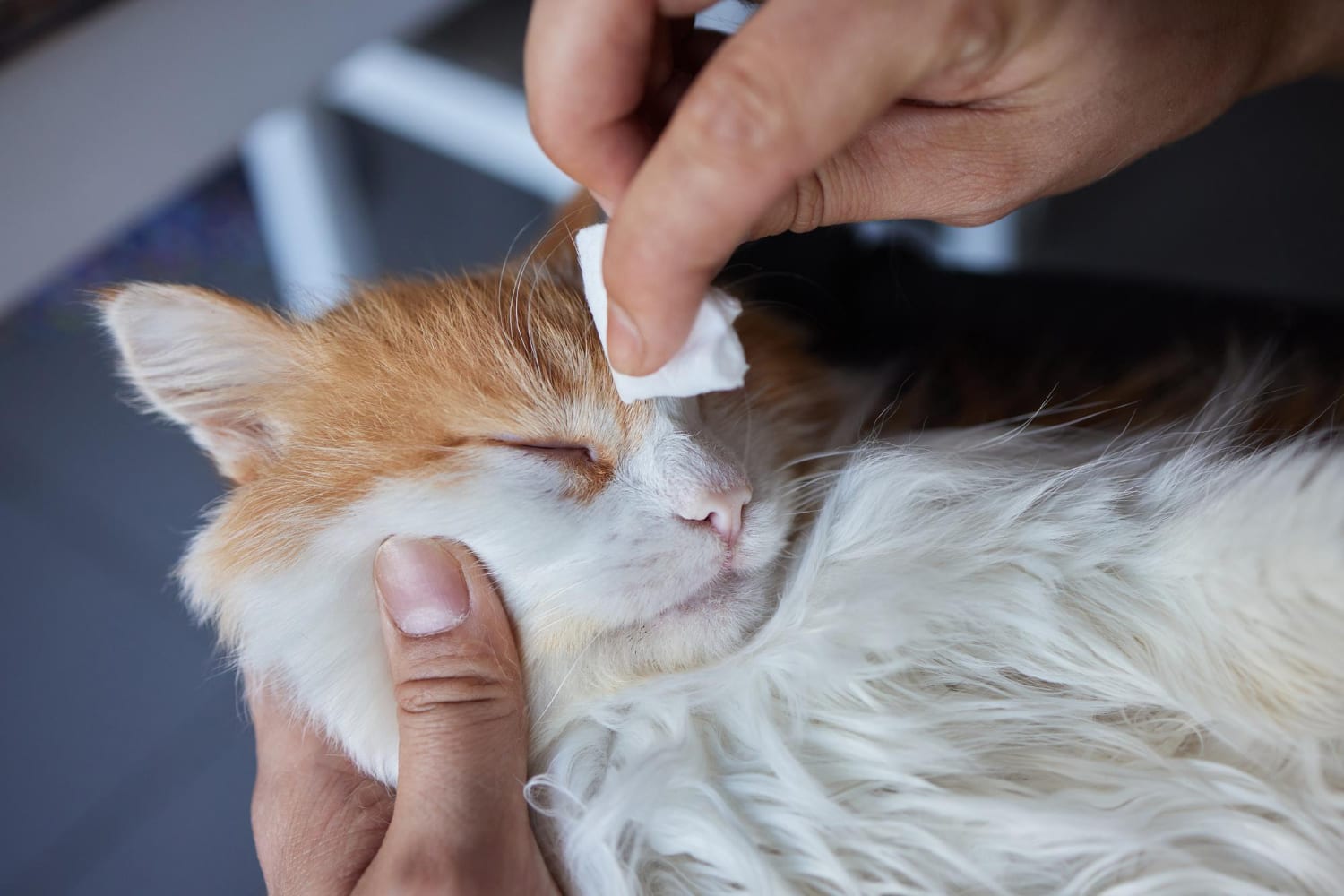
Preventing Conjunctivitis in Cats
Though preventing conjunctivitis is not always possible, some things may help.
Reducing Exposure to Infections
Cats can be exposed to infections in places including catteries, groomers and vets. Staff should ensure cats are not in direct contact with each other. You’ll also want to keep your kitty up to date with their vaccinations.
If you adopt a new cat, be aware that it could be a carrier for a disease. You may consider quarantining it for the first week to ensure it does not develop any signs of cat flu.
Hygiene and Environmental Control
Try to keep your home as clean as possible. This means damp dusting and vacuuming, as well as avoiding any potentially irritating chemicals or plants. It is also important not to smoke or vape when your cat is nearby.
Regular Health Checkups
Seeing your vet regularly is a great way to identify any early issues. When they see your cat, your vet should always perform a nose-to-tail check, including an assessment of its eyes and eyelids.
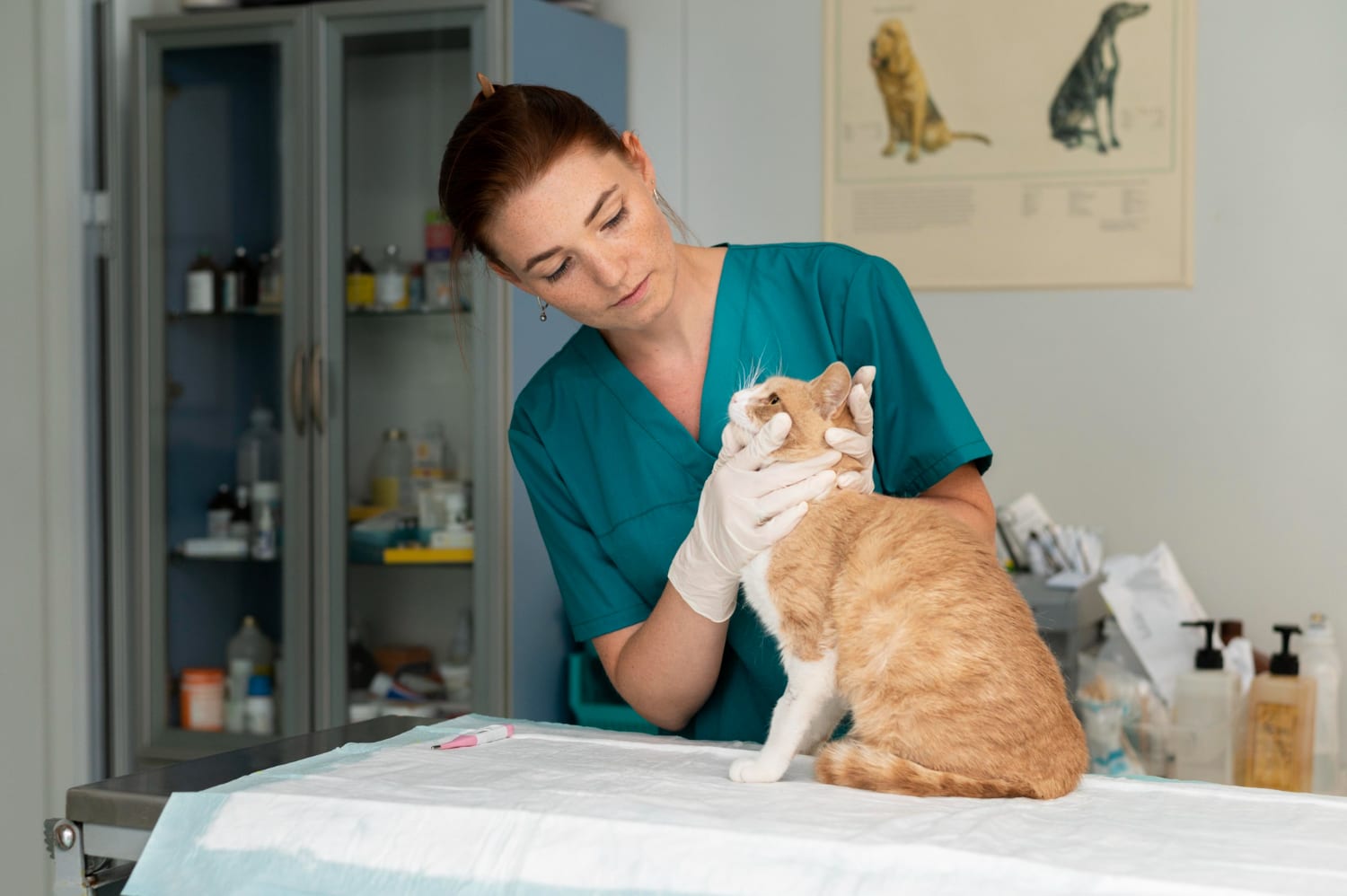
When to See the Vet
When it comes to your cat’s eyes, you don’t want to mess around. Signs can progress quickly, and any early symptoms warrant a chat with your local vet.
If your cat has more alarming signs, such as a foreign body embedded in the eye, proptosis (when the eyeball has popped out), or sudden vision loss, an emergency vet visit should be scheduled.
Learn More About Conjunctivitis in Cats
You are always welcome to contact us with any concerns you may have about your cat's eyes.
Our team is experienced in feline eye health and can explain the issue and the next steps to ensure a speedy recovery for your much-loved pet.
Cat Conjunctivitis FAQs
Is Conjunctivitis Contagious to Other Cats?
Yes, there is the potential for some type of conjunctivitis to be passed on. This is the case with viral infections like cat flu and bacterial infections like Mycoplasma. However, it would not be transmissible if a foreign body or allergy causes the conjunctivitis.
Can It Come Back After Treatment?
Yes, it is common for cats to experience repeated bouts of conjunctivitis. This is commonly seen with cat flu, as cats remain carriers for life. Similarly, cats with allergies cannot be cured, but we can manage them well by altering their environment and providing medicine as soon as any clinical signs appear.
How Long Does It Take to Heal?
The eyes have a healthy blood supply and tend to heal very rapidly. For many cats, you will notice their conjunctivitis looking better within just a couple of days. If the eye does not look better within a couple of days, let your vet know, as the treatment plan may need to be altered.
Continue reading

Signs a Cat is in Pain and How to Recognise Them
Learn how to recognise pain in your cat and the subtle signs to look out for.
Read article
What to Do If Your Dog Eats Chocolate?
Learn what to do if your dog eats chocolate and the signs of toxicity to look out for.
Read article
Signs of Hypothermia in a Dog and How to Treat It
Learn the signs of dog hypothermia and how to treat it quickly and safely.
Read article